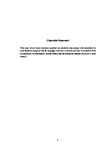The use of the Personal Response System (PRS) at King Khalid University for learning development
| dc.contributor.supervisor | Kelly, Peter | |
| dc.contributor.author | Alzahrani, Bandar | |
| dc.contributor.other | Faculty of Arts, Humanities and Business | en_US |
| dc.date.accessioned | 2019-11-12T13:51:34Z | |
| dc.date.available | 2019-11-12T13:51:34Z | |
| dc.date.issued | 2019 | |
| dc.identifier | 10364522 | en_US |
| dc.identifier.uri | http://hdl.handle.net/10026.1/15138 | |
| dc.description.abstract |
This study will evaluate the use of the Personal Response System (PRS) to increase interactivity in the classroom and change the form of learning from transmissive to constructive learning in Saudi Higher Education. PRS is a technology to enable students in the educational environment to answer questions individually or group and anonymously to the lecturer’s questions. In this study, Activity Theory (AT) has been applied to explore how PRS has changed learning and increases interactivity. The constructionist paradigm has been adopted to create a deep understanding of the use of PRS. The case study methodology was employed in this study. This study has been conducted in Saudi Arabia at King Khalid University (KKU). Grounded Theory (GT) informed the methods of collecting and analysing data. The combination of AT and Grounded Theory was a successful approach, providing a deeper understanding of the use of PRS for learning development. Three methods were used: interviews with lecturers, and group interviews and questionnaires with students. The sample population was chosen from KKU and that included male lecturers and students. Due to cultural limitations, the researcher was unable to gather data from female lecturers or students. In Saudi Education there is segregation between both genders in all levels of learning. The number of participants in this study was 9 lecturers and 76 students from the medical school at King Khalid University. The students are doing bachelor's degrees in medicine and nursing. The findings of this study show introducing PRS has increased interaction inside the classroom. The students reported they are more able to engage with learning and the lecturers are more able to ask questions and assess students’ understanding of the content. Additionally, the role for the students has changed from passive learners to more active learners, who can answer questions, ask questions of their lecturers and discuss the answers with other students. Using AT has revealed many changes in the relationships between students and relationships between students and lecturers. The roles for the individuals participating in learning activities and the rules of the learning activities have changed, allowing time for questions to be asked of all students and the lecturer can offer faster feedback. Shier and less confident students are more able to engage in learning activities with PRS. This enables students to gain a deeper understanding of their subject and course material. Deep understanding is here defined as understanding the meaning of the concepts of the subject as the content is delivered in English. Further, some students defined deep understanding as understanding the concepts in each lecture and connecting these concepts. Using AT analysis and GT as an approach to collecting data has shown several implications for using PRS for learning development. The study concluded that PRS is an effective technology to increase learner interactivity and change the format of traditional lectures. However, there is a need for more training for lecturers to use PRS effectively. PRS can be used with different learning styles, for example, individually or within groups. Therefore, for future research, applying collaborative learning might be a successful approach to investigate the use of PRS. | en_US |
| dc.language.iso | en | |
| dc.publisher | University of Plymouth | |
| dc.rights | CC0 1.0 Universal | * |
| dc.rights.uri | http://creativecommons.org/publicdomain/zero/1.0/ | * |
| dc.subject | Presonal Respons System | en_US |
| dc.subject | Activity Theory | en_US |
| dc.subject | Grounded Theory | en_US |
| dc.subject | Scoial Learning Theories | en_US |
| dc.subject.classification | PhD | en_US |
| dc.title | The use of the Personal Response System (PRS) at King Khalid University for learning development | en_US |
| dc.type | Thesis | |
| plymouth.version | publishable | en_US |
| dc.identifier.doi | http://dx.doi.org/10.24382/1108 | |
| dc.rights.embargoperiod | No embargo | en_US |
| dc.type.qualification | Doctorate | en_US |
| rioxxterms.version | NA |
Files in this item
This item appears in the following Collection(s)
-
01 Research Theses Main Collection
Research Theses Main



